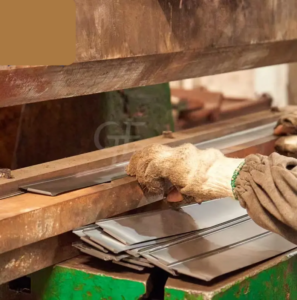In the competitive world of industrial manufacturing, bucket manufacturers play a crucial role in providing high-quality buckets that meet the demands of various industries, such as construction, agriculture, and mining. The continuous improvement of product quality is essential for these manufacturers to maintain their reputation and ensure customer satisfaction. This article will delve into the strategies and practices that bucket manufacturers implement to enhance their product quality.

Emphasis on Material Selection
A primary focus for any reputable bucket manufacturer is the selection of high-grade materials. Buckets are often subjected to harsh environments and heavy loads, making durability a key factor. Manufacturers source materials that offer strength, resilience, and resistance to wear and tear. Common materials include high-strength steel alloys and abrasion-resistant materials. By using top-quality materials, bucket manufacturers ensure that their products can withstand the rigors of demanding applications.
Advanced Manufacturing Techniques
To continuously improve product quality, bucket manufacturers adopt advanced manufacturing techniques. These include precision welding, robotic automation, and computer numerical control (CNC) machining. Precision welding ensures strong and reliable joints, reducing the likelihood of bucket failure. Robotic automation enhances consistency and accuracy in the production process, while CNC machining allows for precise cutting and shaping of components. These techniques result in buckets with superior quality and performance.
Quality Control and Testing
Stringent quality control and testing procedures are integral to the manufacturing process. Bucket manufacturers implement rigorous testing protocols to verify the strength, durability, and overall quality of their products. This includes load testing, where buckets are subjected to maximum loads to ensure they can handle the stress. Additionally, manufacturers conduct inspections at various stages of production to identify and rectify any defects. By maintaining high standards of quality control, bucket manufacturers can deliver reliable and long-lasting products to their customers.
Innovation and Design Improvements
Continuous improvement in product quality also involves innovation and design enhancements. Bucket manufacturers invest in research and development to create innovative designs that improve functionality and efficiency. For example, they may design buckets with enhanced digging or loading capabilities, reducing the time and effort required for specific tasks. Additionally, ergonomic designs that reduce operator fatigue and improve safety are highly valued. By staying ahead of industry trends and incorporating customer feedback, manufacturers can produce buckets that meet evolving needs.
Environmental and Sustainability Initiatives
As sustainability becomes increasingly important, bucket manufacturers are also focusing on environmentally friendly practices. This includes reducing waste, using recycled materials, and implementing energy-efficient production processes. By adopting sustainable practices, manufacturers not only contribute to environmental preservation but also appeal to eco-conscious customers. The integration of sustainable practices into the manufacturing process is a testament to the industry’s commitment to continuous improvement.
Conclusion
In conclusion, bucket manufacturers are committed to continuously improving product quality through various strategies and practices. Emphasizing material selection, adopting advanced manufacturing techniques, implementing stringent quality control and testing procedures, innovating design improvements, and focusing on environmental sustainability are all crucial aspects of this commitment. By prioritizing quality and innovation, bucket manufacturers ensure that their products meet the high standards required by their diverse customer base, thereby securing their position as leaders in the industry.
